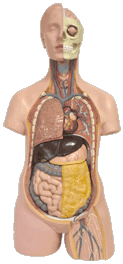At WiseGEEK, we're committed to delivering accurate, trustworthy information. Our expert-authored content is rigorously fact-checked and sourced from credible authorities. Discover how we uphold the highest standards in providing you with reliable knowledge.
What is Pityriasis Rubra Pilaris?
Pityriasis rubra pilaris is a chronic skin condition that causes red, dry, scaly patches to appear on various parts of the body. It is unclear what triggers the onset of symptoms, but the condition can either be inherited or acquired at some point in adulthood. Pityriasis rubra pilaris is not typically painful, though dryness and itching can cause significant discomfort. In addition, many people become self-conscious and embarrassed when skin changes affect the face, scalp, or hands. Doctors can usually relieve symptoms and improve the appearance of rashes with topical lotions.
The exact causes of pityriasis rubra pilaris are unknown. Medical research suggests that some cases are genetic, and children can start showing symptoms in the first decade of life. There also appears to be an acquired form of the disorder that primarily affects people in their 40s and 50s. Inherited pityriasis rubra pilaris tends to develop slowly during early childhood and persist throughout patients' lives, while the acquired variety comes on quickly and goes away on its own in a few years. The condition is rare, and it is often mistaken for more common types of psoriasis.

Most cases of both inherited and acquired pityriasis rubra pilaris first affect the scalp. Skin becomes red and scaly, and white flakes fall from the hair. The next stage of the disorder typically involves the palms of the hands and the soles of the feet, causing dryness, cracking, and skin thickening. Some people also experience symptoms on their elbows and knees. Rarely, pityriasis rubra pilaris becomes severe enough to cover most or all of the body.
Children and adults who exhibit the physical symptoms of pityriasis rubra pilaris are generally referred to dermatologists by their primary care doctors. A specialist can evaluate a patient's symptoms, ask about the onset of rashes, and collect a skin tissue sample for careful analysis. Lab tests reveal abnormally thick, hard, fibrous skin tissue and darkening at the cellular level.
There is not a clear cure for pityriasis rubra pilaris, but patients can use oral and topical medications to lesson symptoms and promote faster healing. Over-the-counter skin moisturizers are usually effective at relieving dryness and repairing cracked skin. In a severe case, a doctor may suggest oral or topical corticosteroids. Experimental phototherapy and laser treatment procedures similar to the ones used for acne may be beneficial in the future, but more research is needed before most doctors will consider clinical treatments.
AS FEATURED ON:
AS FEATURED ON:










Discussion Comments
Oh, my. Wish my case of PRP was only "discomfort." PRP is a miserable, all consuming, exhausting disease. Cracked and bleeding fissures on my hands and feet, a red scaly rash all over that sheets of flakes of dead skin in a trail, long sleepless nights. Some of the medications have life threatening side effects, and here is no body of research that proves any medication really helps. No over the counter cream does more than calm symptoms.
Post your comments